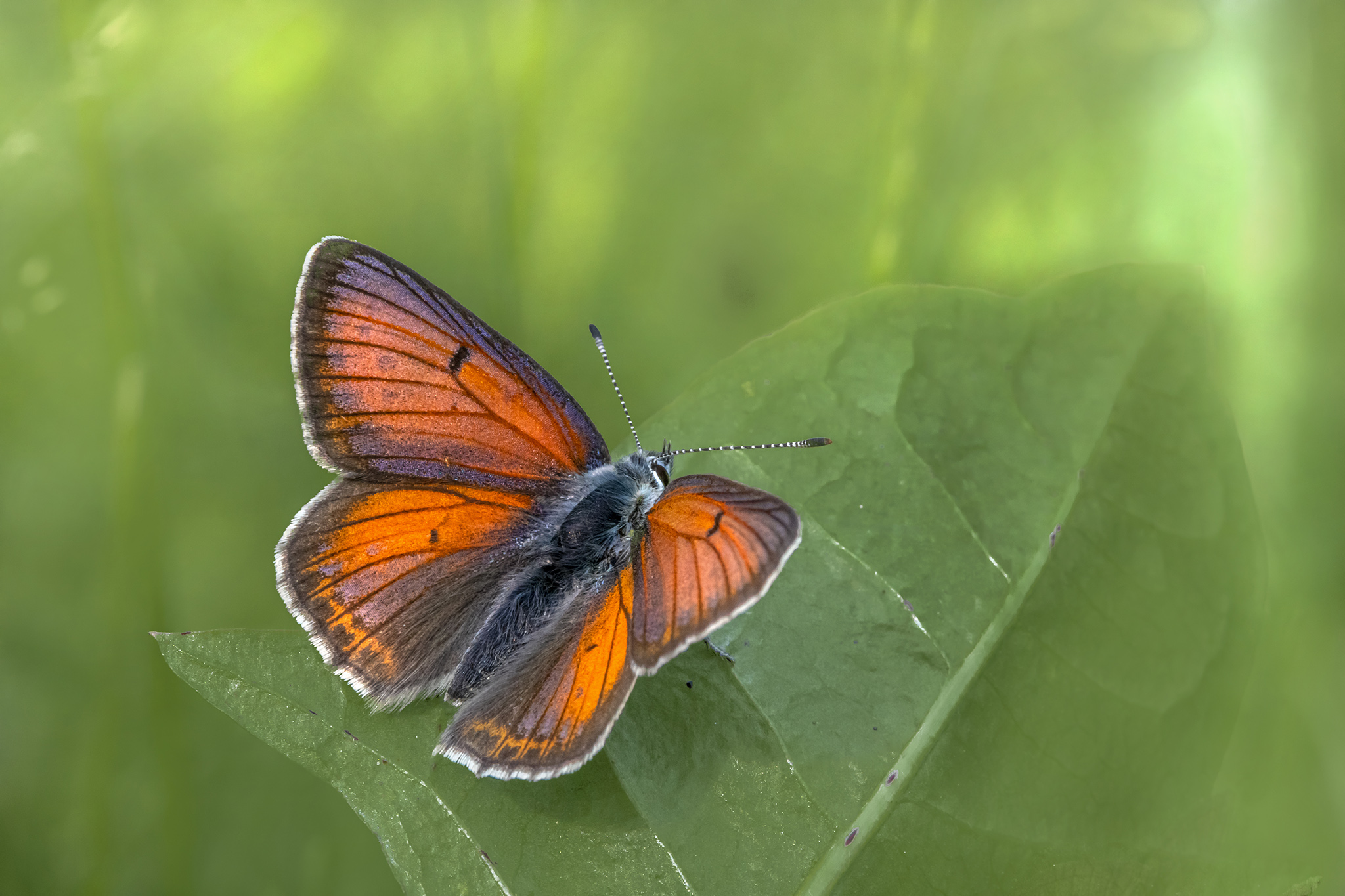The Small Copper (Lycaena phlaeas) is a beautiful butterfly species belonging to the family Lycaenidae. Here are some key characteristics and information about this delightful butterfly:
- Appearance: The Small Copper is a relatively small butterfly with a wingspan ranging from 22 to 30 millimeters. It features bright orange wings with black markings along the edges and a distinctive row of black spots on the underside of its hindwings. Males typically have brighter coloration and more distinct markings compared to females.
- Distribution: The Small Copper is widely distributed across Europe, North Africa, and parts of Asia. It is also found in localized populations in North America. Within its range, it inhabits various habitats, including grasslands, meadows, heathlands, moors, and even urban areas with suitable vegetation.
- Habitat: Small Coppers prefer open areas with plenty of sunlight and nectar-rich flowers. They can be found in a variety of grassy habitats, including fields, meadows, road verges, and garden borders. Their presence is often associated with the presence of their larval host plants, which include various species of sorrel (Rumex spp.).
- Lifecycle: The lifecycle of the Small Copper consists of four stages: egg, larva (caterpillar), pupa (chrysalis), and adult butterfly. After hatching from eggs laid on the leaves of host plants, the caterpillars feed on the foliage before pupating. The pupa is typically attached to a plant stem or leaf. The adult butterfly emerges from the pupa after a few weeks.
- Behavior: Small Coppers are active butterflies with a rapid and erratic flight pattern. They are often seen basking in the sun or feeding on the nectar of various flowers, particularly those with tubular or bell-shaped blooms. Males may engage in territorial behavior, patrolling their territory to seek out females.
- Conservation: While the Small Copper is not considered globally threatened, it may face localized declines due to habitat loss, agricultural intensification, and changes in land management practices. Conservation efforts focus on preserving and restoring suitable grassland habitats, including the conservation of native wildflower species that serve as nectar sources for adult butterflies.
- Cultural Significance: Small Coppers are appreciated by butterfly enthusiasts and nature lovers for their vibrant coloration and graceful flight. They are also important pollinators, contributing to the pollination of various flowering plants in their habitats.
Overall, the Small Copper is a charming and ecologically important butterfly species that adds beauty to grassland ecosystems across its wide geographical range. Efforts to conserve its habitats and promote sustainable land management practices are crucial for ensuring the continued survival of this delightful insect.
Views: 34
Subscribe to the newsletter:
